Forget the Jars: Your Ultimate Guide to Making Amazing Baby Food at Home
I’ve spent a good chunk of my life in professional kitchens, but honestly, nothing could have prepared me for the sheer panic of feeding my first baby. Staring at those rows of baby food jars, then back at the fresh carrots in my fridge, I felt this huge pressure. I knew if I made it myself, I could control everything—no weird preservatives, no added sugar, just real food. That whole experience taught me way more than culinary school ever did.
In this article
So let’s get one thing straight: making your own baby food isn’t about being some kind of super-parent. It’s about giving your little one a great start with flavors you choose and trust. It’s simpler than you think, and believe me, it’s incredibly rewarding. Plus, it can seriously cut down your grocery bill.
This guide is basically all my hard-earned knowledge, from both my chef life and my parent life, rolled into one. Let’s get into the real-deal steps and tricks I learned along the way.

First Things First: The Ground Rules
Before you even think about firing up the blender, there are a couple of core ideas to wrap your head around. A baby’s digestive system is brand new, so our job is to make things easy for it. That’s why pediatric experts generally recommend starting with single-ingredient purées somewhere around the six-month mark.
This is a game-changer because it lets you pinpoint any potential food allergies or sensitivities right away. When you introduce a new food, give it a good three to five days before trying something else. This gives you a clear window to see how your baby reacts. Easy peasy.
The Chef’s Take on Cooking Methods
How you cook the food makes a huge difference in what nutrients actually make it into your baby’s tummy. The goal is to get everything soft enough to blend while keeping all the good stuff locked in.
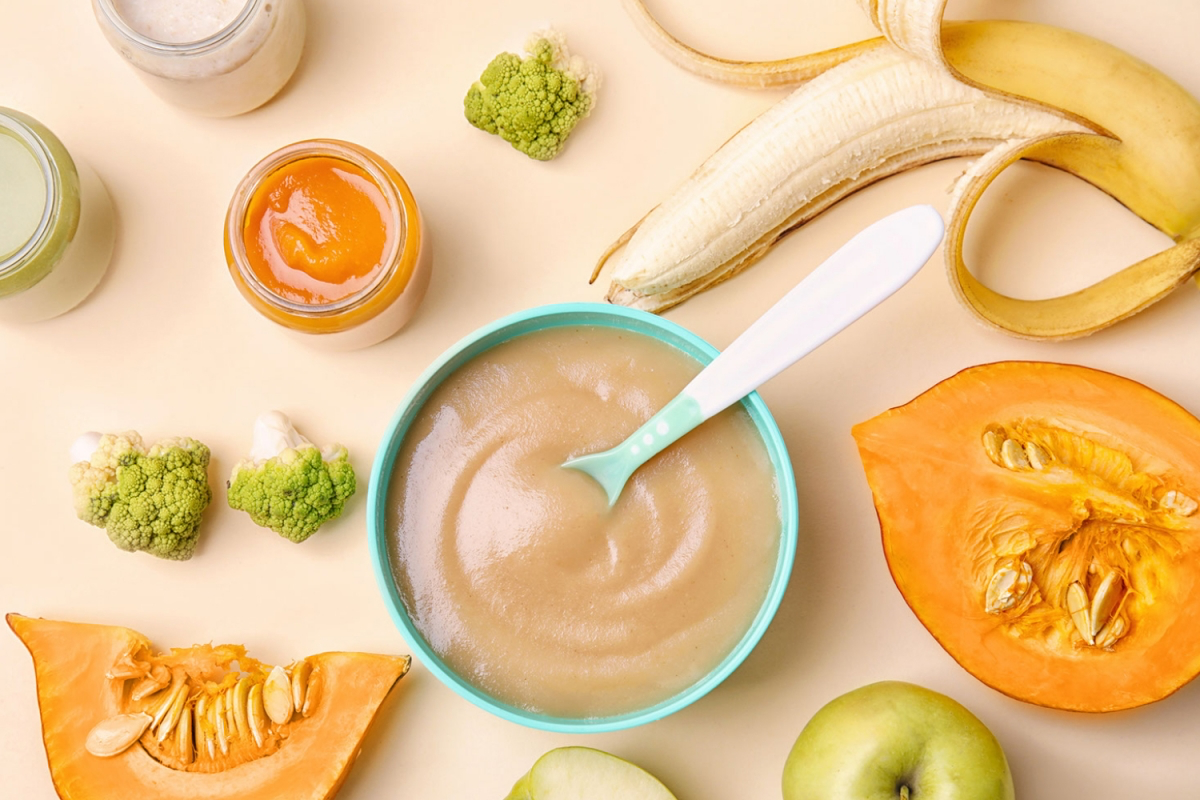
- Steaming: This is my go-to method, hands down. It cooks food with gentle, indirect heat, so it doesn’t wash away important water-soluble vitamins like Vitamin C. All you need is a simple steamer basket—you can get a stainless steel one for under $10 at Target or online—that fits inside a pot you already own.
- Roasting: This is where the magic happens for root veggies like sweet potatoes, carrots, and butternut squash. Roasting at around 400°F (200°C) caramelizes the natural sugars, creating a deep, sweet flavor that babies just seem to love. It also results in a thicker, less watery purée. By the way, the first time I roasted a squash for my baby, I forgot to pierce the skin. It literally exploded in my oven. Learn from my mistakes! Always poke a few holes in it first.
- Boiling: I’m not a huge fan of boiling because a lot of nutrients can leach out into the water. But if you have to boil, use the smallest amount of water possible and keep the lid on. Pro tip: Don’t throw out that cooking water! It’s full of vitamins. You can use it to thin out your purées, adding some of that goodness right back in.
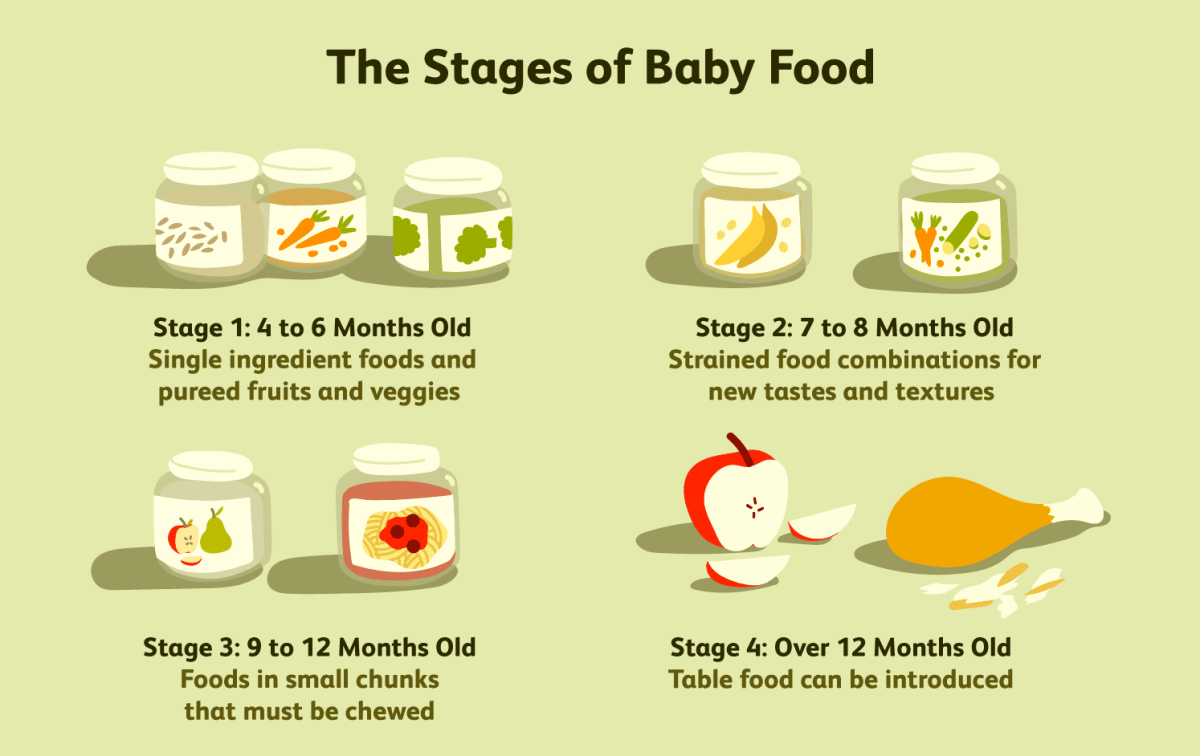
Your Kitchen Tool Kit (No Fancy Gadgets Needed)
You really don’t need a counter full of baby-specific appliances. My time in commercial kitchens taught me that a few solid, reliable tools are worth more than a drawer full of junk. Here’s what actually matters:
- A Decent Blender: This is your workhorse. A high-powered blender, like a Vitamix, will turn even stringy things like green beans into a silky-smooth liquid, which is perfect for new eaters. But you don’t have to spend a fortune! A personal blender, like a NutriBullet (usually around $60-$80), works great for baby-sized batches. An immersion or stick blender is also a fantastic option for blending small amounts right in the pot.
- Silicone Ice Cube Trays: For freezing portions, nothing beats silicone trays. Standard trays hold about one ounce per cube, which is the perfect starting portion size. The frozen purée cubes pop out so easily. Look for ones with a lid to prevent freezer burn; you can find them everywhere from Amazon to home goods stores.
- A Fine-Mesh Sieve: This is the secret weapon for an absolutely perfect texture. After you blend, push the purée through a sieve to catch any stubborn skins, seeds, or fibers. It’s a non-negotiable step for foods like peas or raspberries.
- Freezer Bags or Containers: Once your purée cubes are frozen solid, pop them out and transfer them to a freezer-safe bag. Get a permanent marker and label it with what’s inside and the date. Trust me,
Inspiration:
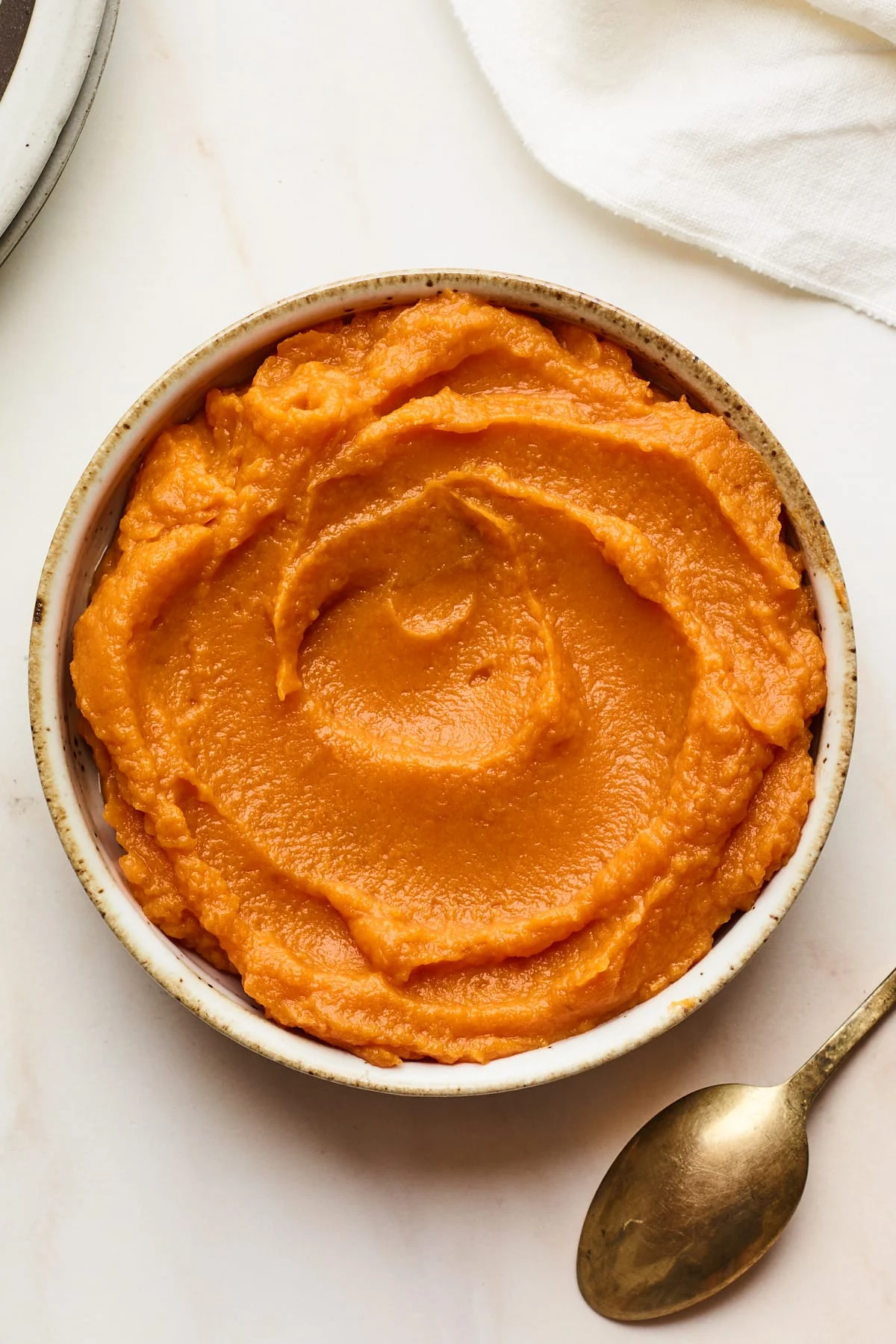
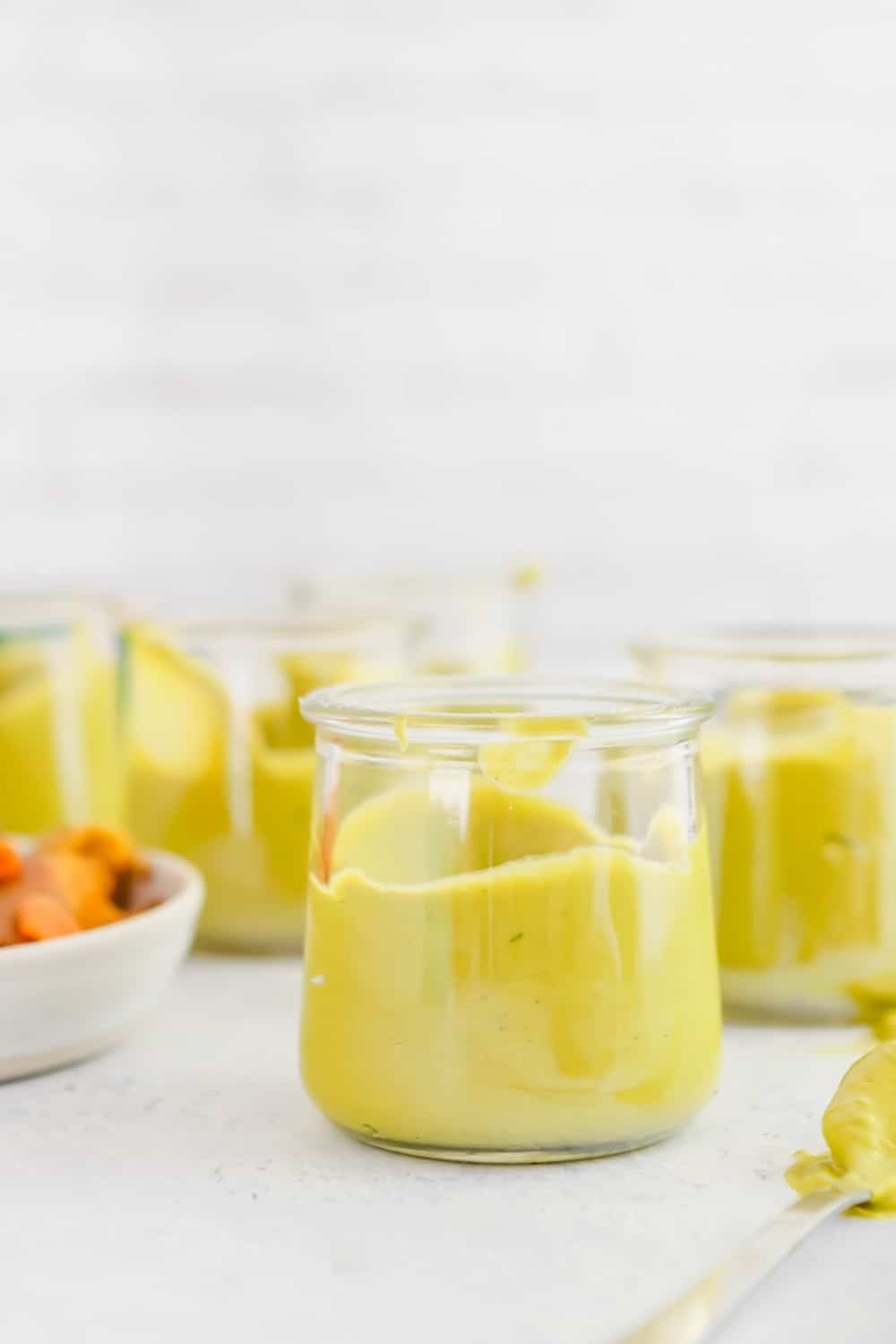
Batching Brilliance: Once you’ve steamed and blended, the freezer is your best friend. Spoon your vibrant purées into flexible silicone ice cube trays—the Oxo Tot Baby Food Freezer Tray is a parent-favorite for a reason. Once frozen solid, pop the cubes into labeled freezer bags. You’ll have perfect, single-portion meals ready to go for weeks. Just remember to label with the contents and date!
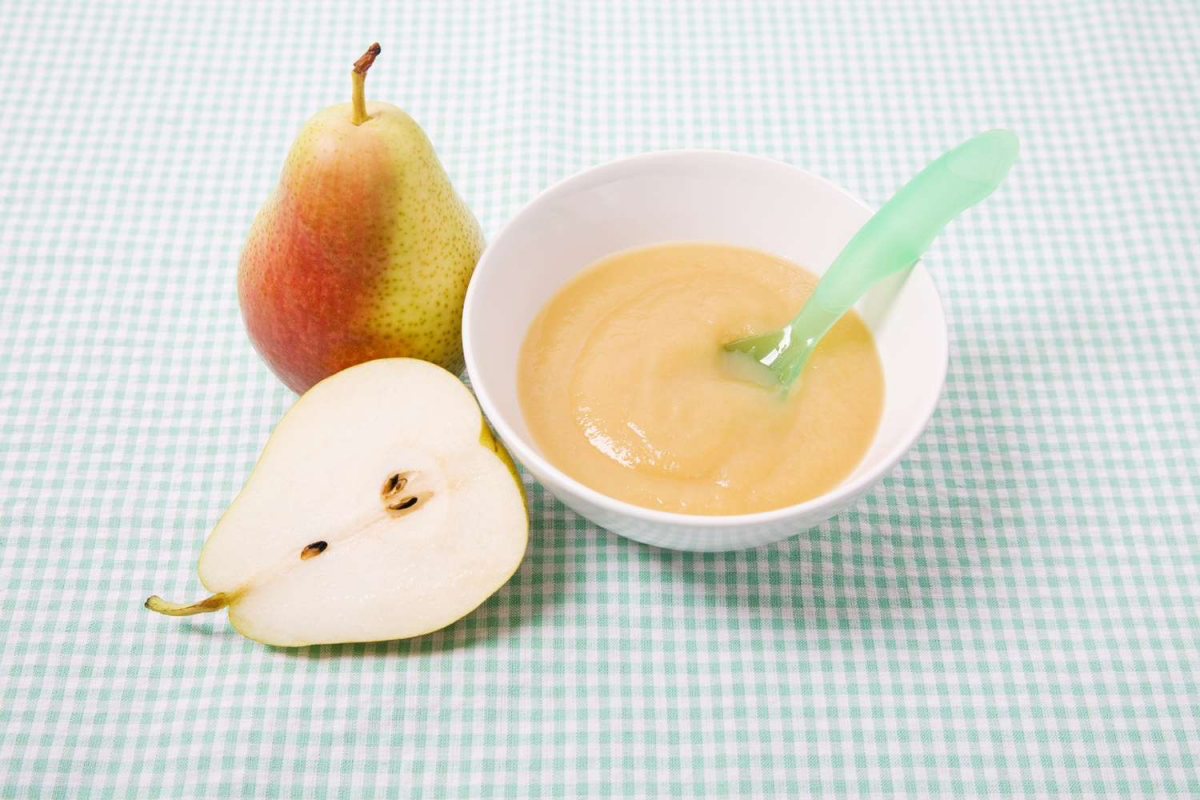
- Boosts brain development with healthy fats.
- Creates an incredibly creamy, satisfying texture.
- Introduces new, subtle flavors to your baby’s palate.
The secret? Once you move past single-ingredient purées, try blending in a spoonful of ripe avocado, a tiny drizzle of high-quality extra virgin olive oil, or a swirl of coconut cream.
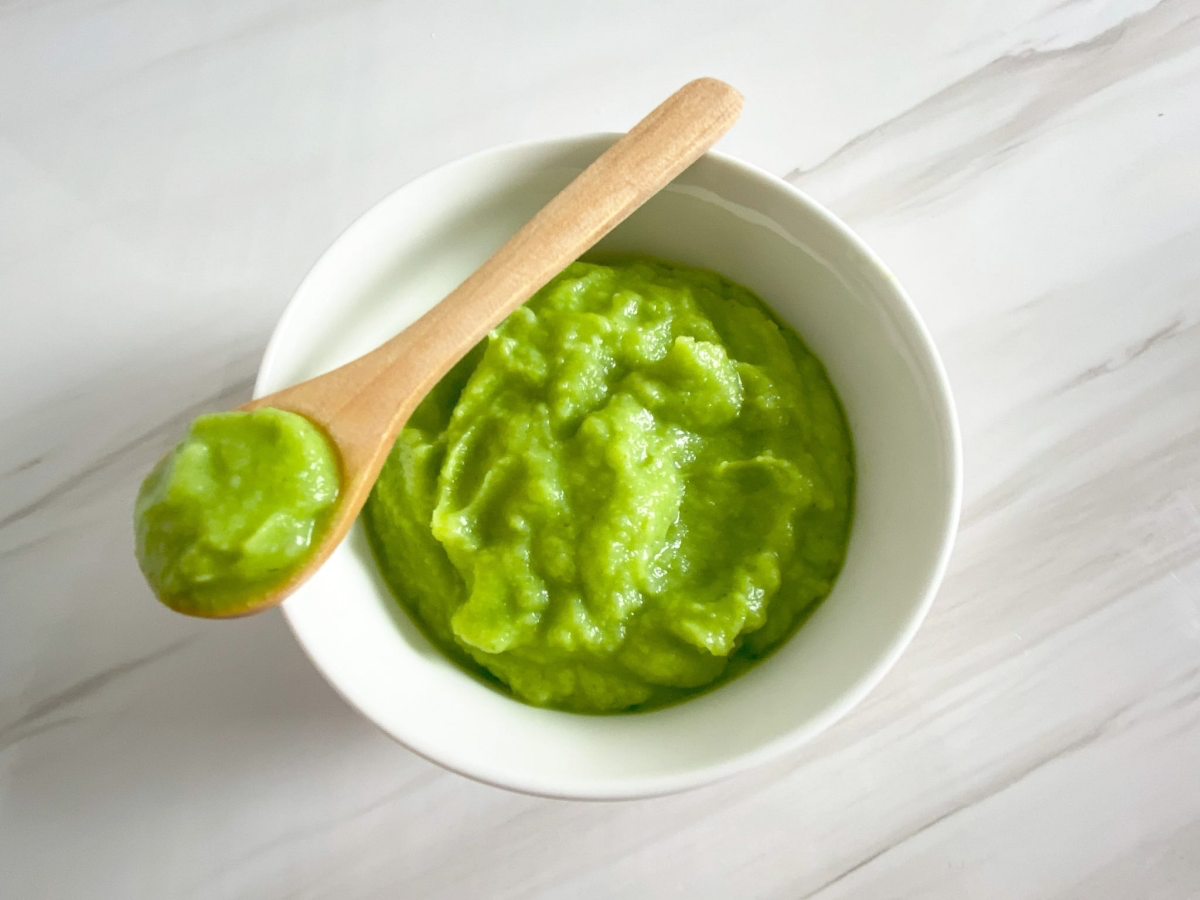
According to the American Academy of Pediatrics, introducing a variety of flavors and textures early can help shape food preferences and may prevent picky eating later on.
This means you’re not just feeding your baby; you’re training their palate. By making your own food, you expose them to the true, unmasked taste of broccoli, the earthy sweetness of beets, and the bright tang of raspberries, setting the stage for a lifetime of adventurous eating.
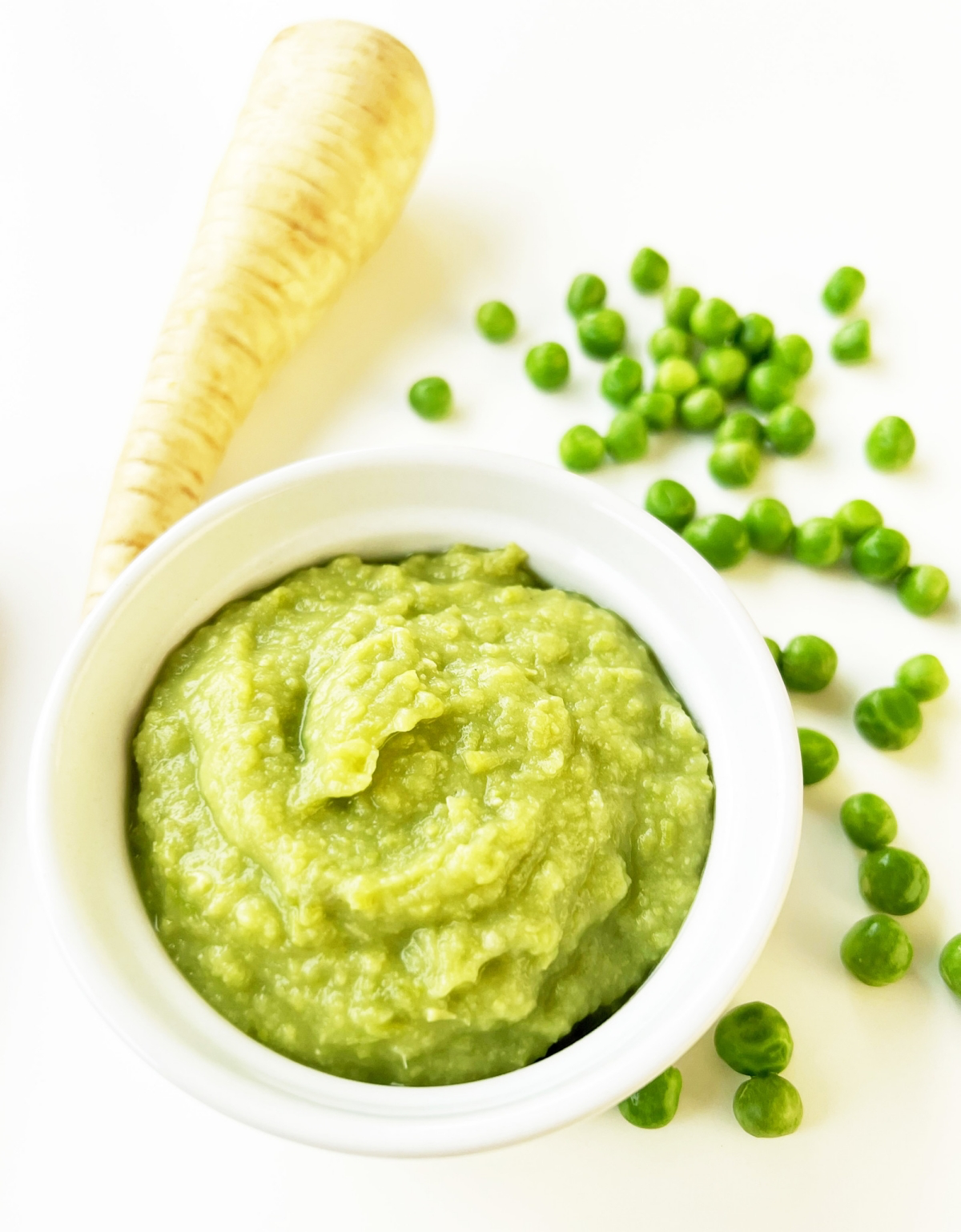
Thinking beyond the standard carrot and sweet potato?
Look to global first foods for inspiration! In many parts of Asia, babies are introduced to solids with congee, a savory rice porridge. In India, a soft, puréed lentil dish called dal is a popular choice, packed with protein and iron. And in Latin America, creamy mashed papaya or banana offers a tropical, enzyme-rich start. It’s a wonderful way to introduce diverse flavors from day one.
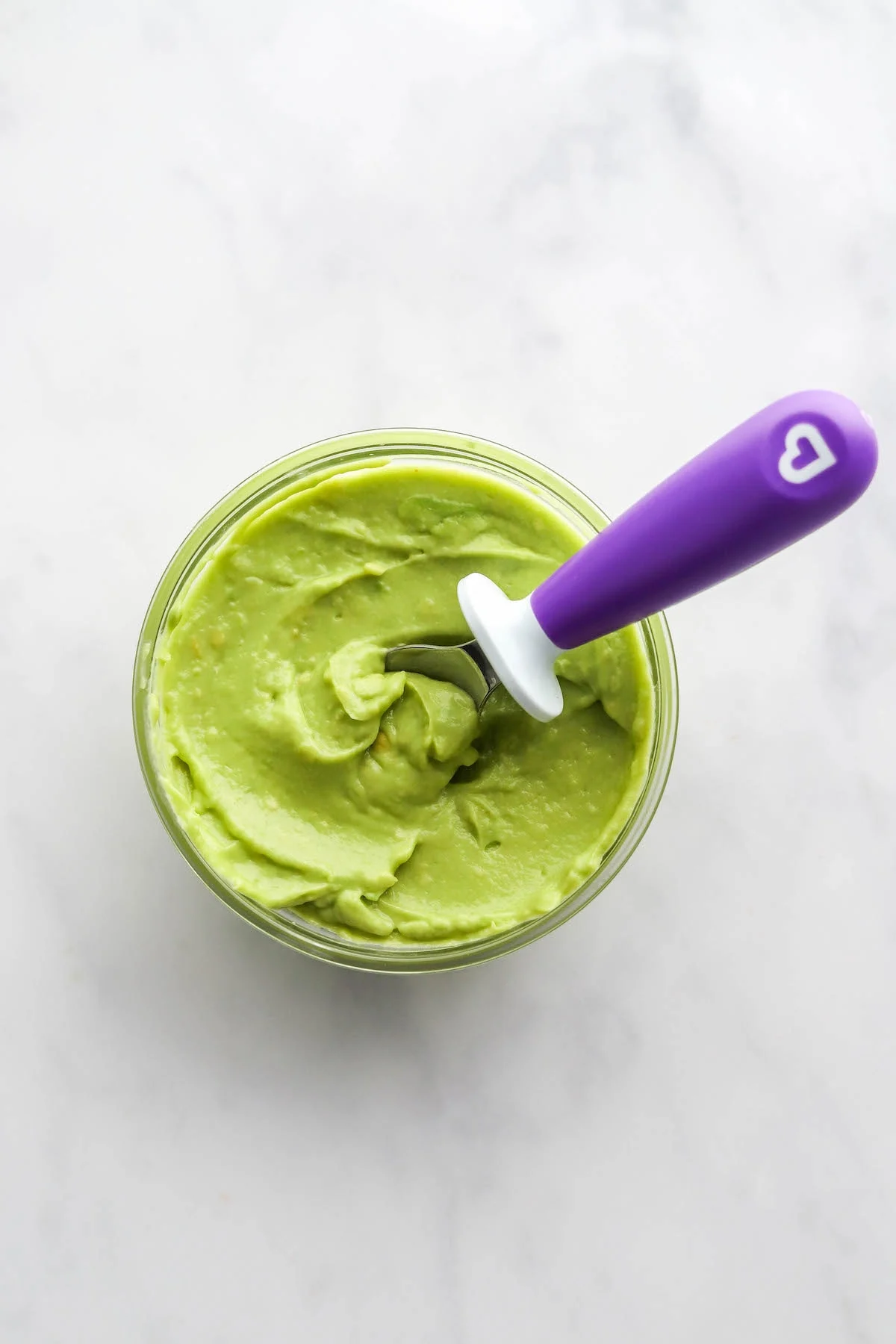
Dedicated Steamer/Blender: An all-in-one machine like the Beaba Babycook steams and blends in the same container, minimizing cleanup. It’s incredibly convenient for busy parents but is an added appliance.
High-Powered Blender: Using a powerful blender you already own, like a Vitamix or NutriBullet, yields the smoothest purées possible. You’ll have to steam the food separately, but the machine’s versatility extends far beyond baby food.
For most, a simple steamer basket and a good existing blender are more than enough to get started.
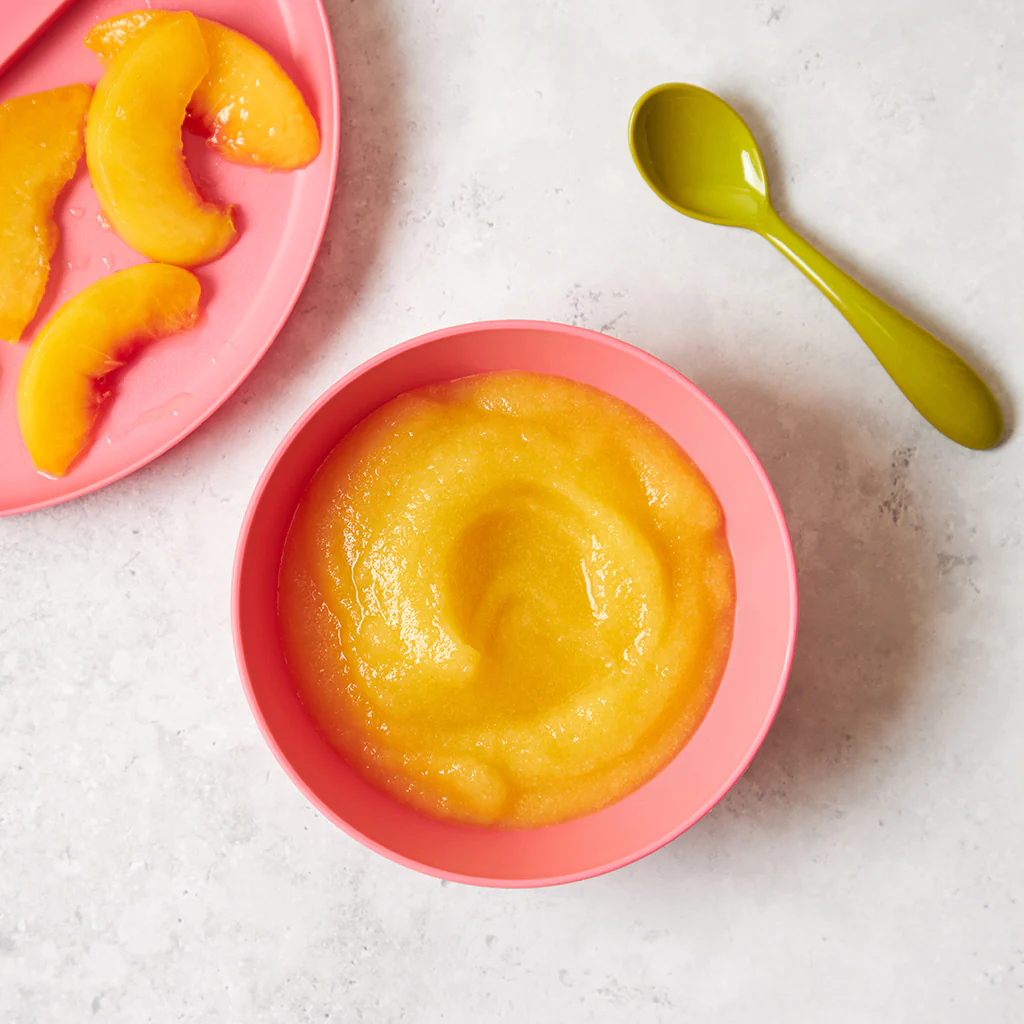
- Smart Freezing: Use silicone ice cube trays for perfect portions. A standard cube is about 1 ounce (30 ml).
- Thawing Safely: The best way to thaw frozen purée is overnight in the refrigerator. For a quicker method, place the frozen cube in a small glass bowl set within a larger bowl of warm water.
- Never Refreeze: Once thawed, purées should not be refrozen due to the risk of bacterial growth.
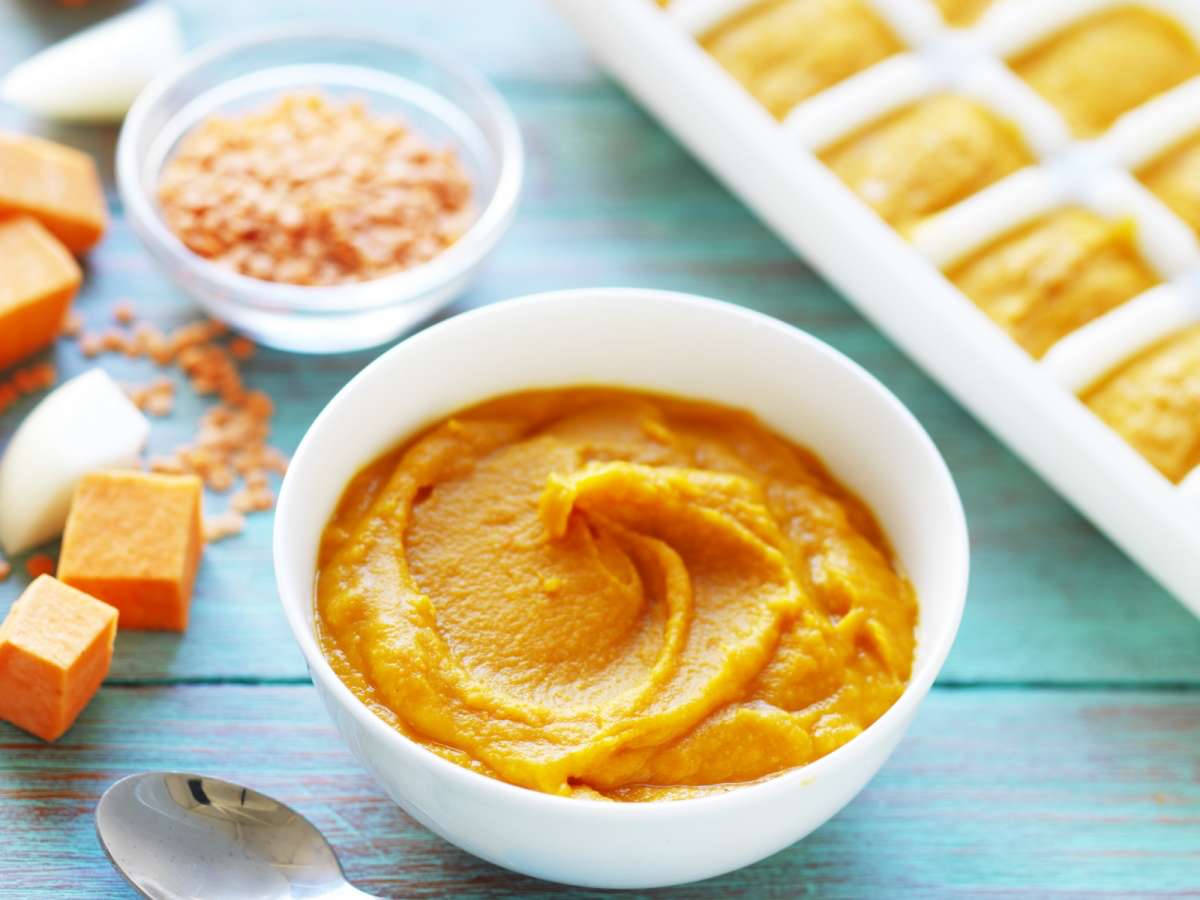
Shopping with the seasons can reduce your produce costs by up to 30% and maximizes nutrient density.

You’ll often see recipes for baby-led weaning (BLW), a method that’s gaining popularity. So, what’s the difference?
- Purées (The Traditional Method): You are in control of feeding. Food is spoon-fed, allowing you to easily track how much your baby is eating. It’s a gentle introduction to textures.
- Baby-Led Weaning (BLW): The baby is in control. They self-feed soft, finger-sized pieces of whole foods. It’s excellent for developing motor skills and exploring textures independently.
Many parents find success with a combination of both approaches!
The #1 Rookie Mistake: Tossing the cooking water. When you steam vegetables, valuable water-soluble nutrients like Vitamin C and B vitamins leach into the water. Instead of reaching for fresh water to thin your purée, use that nutrient-rich liquid you steamed with. It’s a simple chef’s trick to ensure you’re packing the most nutrition into every spoonful.










